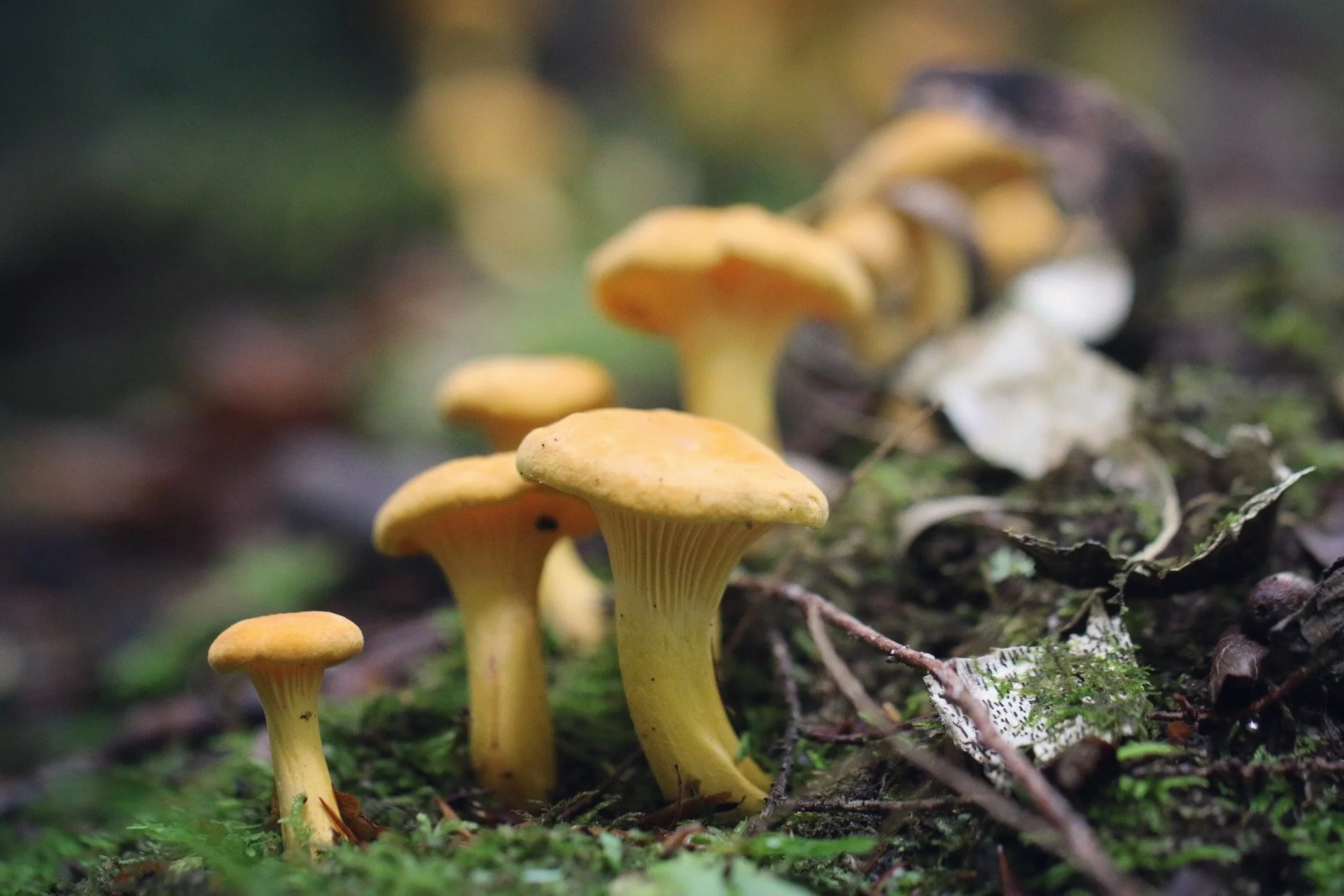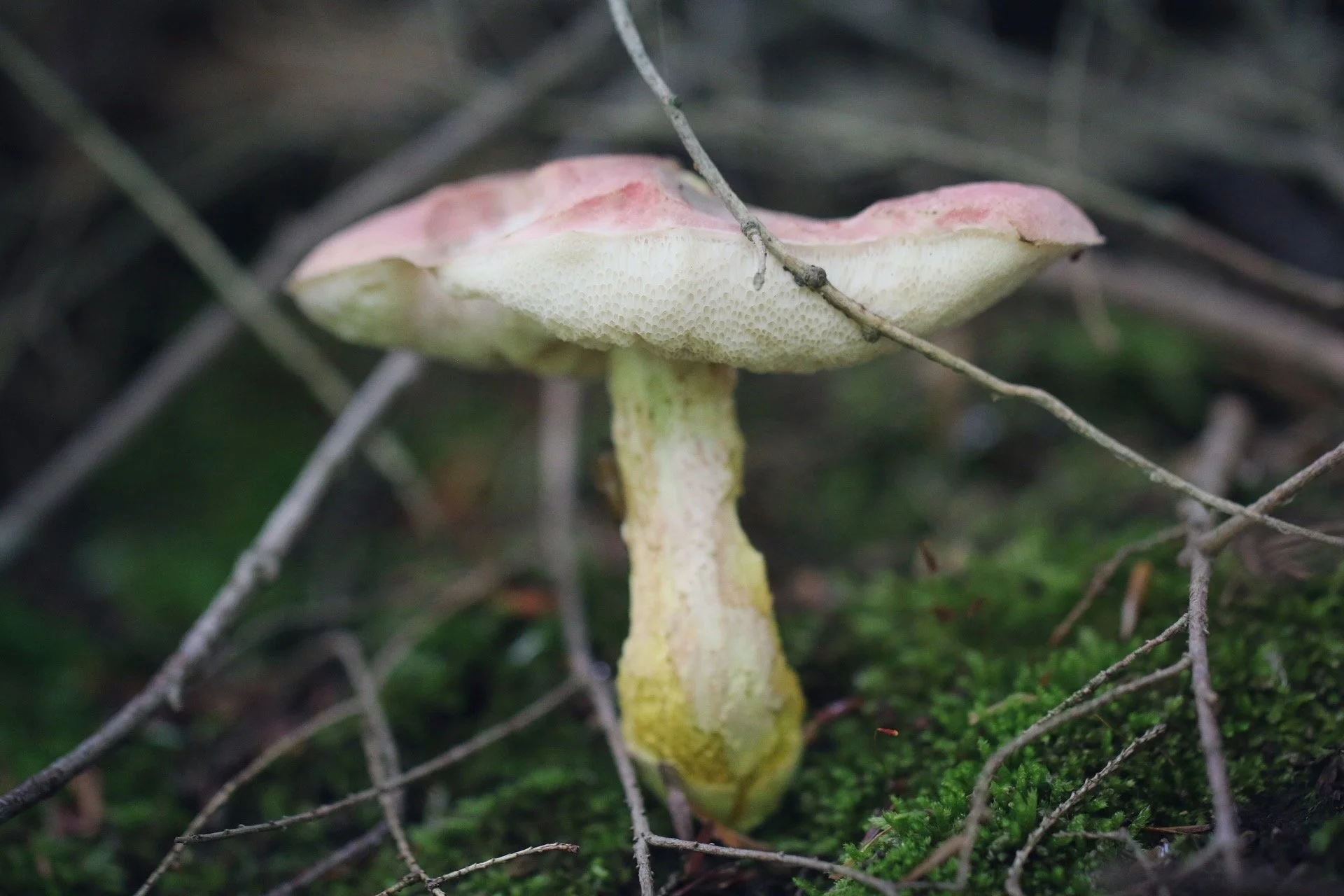Chanterelles After the Solstice
I am climbing a steep logging road in the humid, wildfire smoke-tinged air, each sweaty step fueled by a single-minded sense of purpose. My mission: to check on the progress of my favorite early chanterelle patch, where I discovered a small but stunning flush of goldens around this same time last year.
I’ve got Cantharellus on my mind, but the landscape first presents Pleurotus, a diminutive cluster of anise-scented seashell shapes bursting from a dying birch. It’s not enough for a meal, but the oysters are a good confidence booster on this muggy late June afternoon. While June may be prime time for Vermont strawberry picking and trout fishing, it’s too soon for the mycologically inclined to encounter the phenomenal flushes of a wet August or September outing. But the mycelium is anything but dormant – with May morels now feeling like a distant memory, summer fruiters are making an early splash.
Scanning the surrounding slopes, a brilliantly hued mushroom now pops boldly into view, its ochre cap adorned with ominous yellow warts. This is no chanterelle – it’s a toxic Amanita flavoconia, the first mushroom I’ve seen in action this season from this fascinating but fearsome genus. Once Amanitas have arrived, a medley of Boletes can’t be far behind.
My steps have slowed, imbued with anticipation as I close in on my chanterelle spot. Turning up a narrow streambed, rushing with runoff from last night’s soaking, there I find them, exactly where they fruited last year. Dozens of pristine chanterelle buttons glow with a resplendent gold, standing out against the mossy green backdrop.
Most of the slow-growing chanties are too small to harvest, but I carefully pick a few of the most mature fruiting bodies, bringing them to my face and inhaling deeply. At first, the signature chanterelle fragrance is mysteriously absent, and I worry my olfactory powers might be compromised by a recent run-in with COVID. Then, suddenly it hits me, tickling my nostrils like an exotic feather– that enigmatic apricot aroma, subtle but singularly scrumptious.
Satisfied, I begin my descent back toward the trailhead, seeing plenty of the underwhelming platterful mushroom, but no other notable species on my walk out of the woods. Just before arriving back at the parking lot, however, I instinctively scan the wooded slopes above, where I have occasionally seen king Boletes in seasons past.
A mature chrome-foot Bolete
There are no kings today; that would be too good to be true. Yet I am delighted to discover a flush of an esteemed edible relation: Harrya chromapes, the chrome-foot Bolete, the yellow base of its stem contrasting elegantly with its pinkish brown cap and creamy pores. Eating raw mushrooms is ill advised; the thick chitinous cell walls require heat to foster digestibility and food safety. Familiar with this fungus, I make a rare exception. Flicking off a few slugs, I take the tiniest nibble of the nutty, savory flesh, hoping this chrome-foot will be the harbinger of a bountiful bolete season.
On the heels of summer solstice, rainy afternoons are summoning the season’s first heat-loving mushrooms. With continued thunderstorms a mainstay in the ten-day forecast, and new mushrooms arriving daily upon the scene, we are poised for a memorable early July flush.

